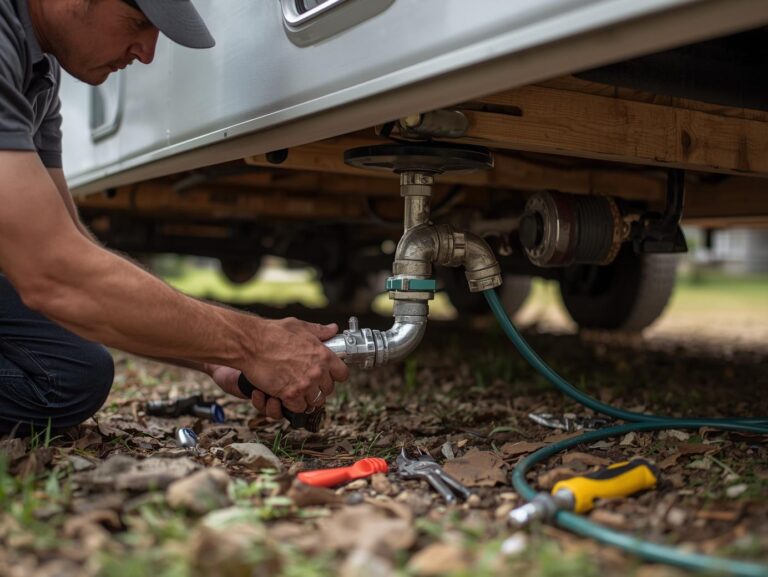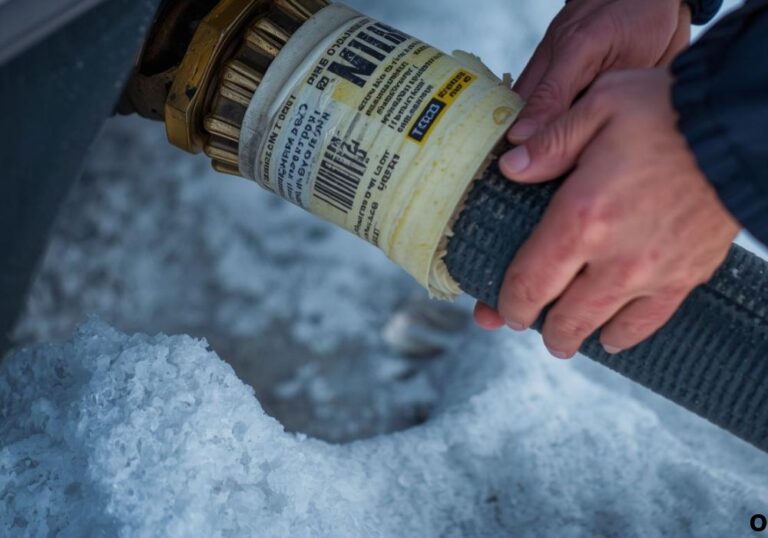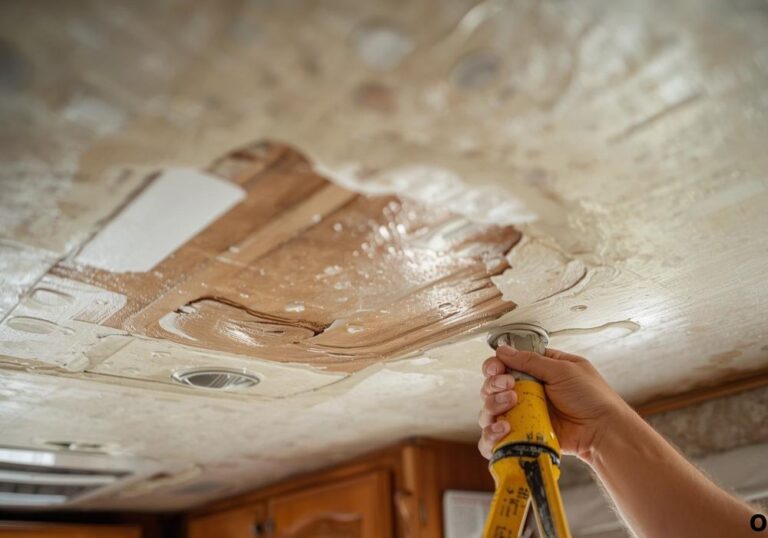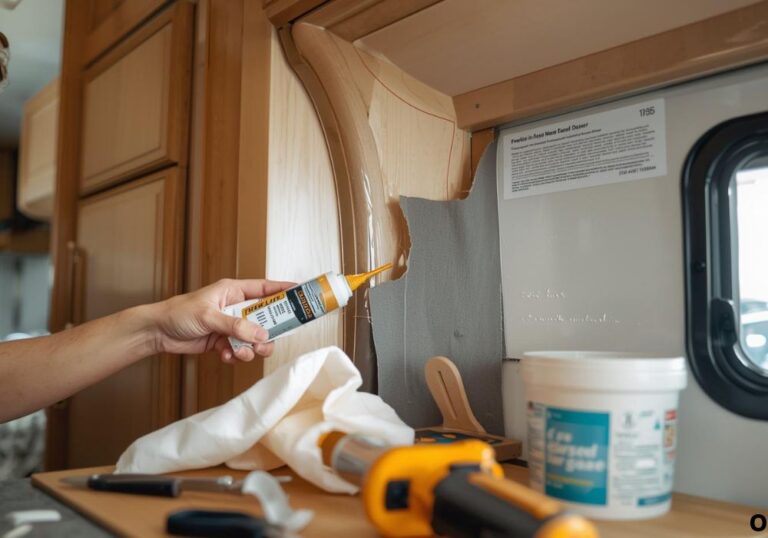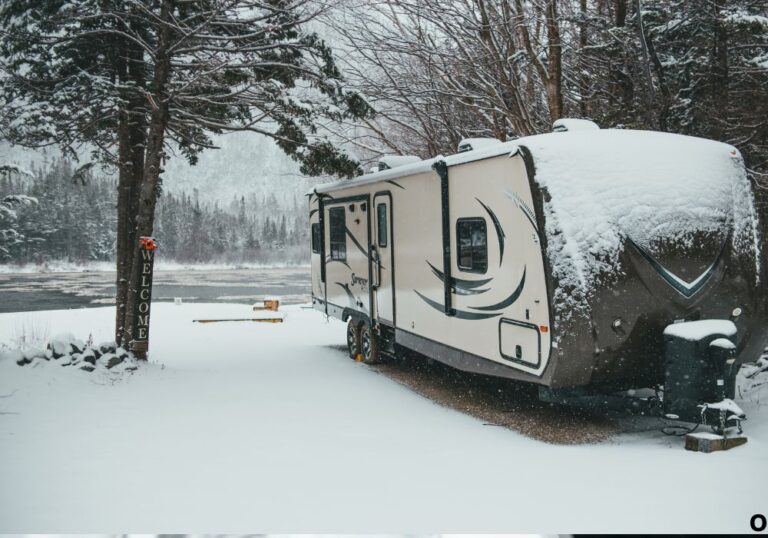Step-by-Step Guide to Fix RV Ceiling Water Damage at Home
You’re on a road trip, enjoying the scenery, when you notice a dark, spreading stain on your RV ceiling. What seemed like a small, harmless spot may actually be the start of a much bigger problem.
Water damage in an RV ceiling can happen quietly and cause extensive damage if ignored. From sagging panels to mold growth, even minor leaks can escalate quickly.
Many RV owners discover water damage too late, often after a heavy rainstorm or during winter when condensation builds up. The smell of mildew or damp insulation can be the first real clue something is wrong.
While professional repairs are always an option, most minor to moderate water damage can be fixed at home with the right approach. Early action not only saves money but also prevents structural damage.
In this guide, we’ll explore everything you need to know about repairing RV ceiling water damage. From identifying the signs to executing repairs and preventing future leaks, this step-by-step guide covers it all.
By following these tips, your RV ceiling will be restored to a dry, safe, and durable state. You’ll also gain practical advice for long-term maintenance.
RV ceiling water damage doesn’t have to ruin your adventures. With knowledge, preparation, and care, you can fix the damage and enjoy your RV for many more trips.
Signs of RV Ceiling Water Damage

Detecting water damage early is critical. Common signs include dark stains, peeling paint, or sagging ceiling panels that weren’t there before.
Soft spots in the ceiling indicate underlying damage. Press gently with your fingers, and if it feels spongy, moisture is likely present behind the surface.
Unusual odors like mustiness or mildew are often a warning sign. Mold can grow inside the ceiling cavity, invisible at first glance.
Use tools like moisture meters to detect damp areas that aren’t visible. This prevents missing hidden water damage that could worsen over time.
Ceiling stains can vary depending on the material. Fiberglass panels may discolor differently than wooden or composite panels.
Localized damage often occurs near vents, skylights, or plumbing. Inspect these areas regularly to catch leaks before they spread.
Ignoring minor leaks may lead to sagging panels, weakened support structures, and even collapse. Early detection is key to avoiding major repairs.
Regular visual inspections and touch tests after storms or seasonal changes help catch problems early. Prevention is always cheaper than repair.
Common Causes of RV Ceiling Water Damage
Roof leaks are the most common culprit. Vents, skylights, and roof seams often allow water to seep in during rain or snow.
Condensation from interior temperature changes can accumulate over time. Humidity trapped inside the RV may saturate the ceiling and insulation.
Plumbing leaks above the ceiling or near bathroom and kitchen areas can be hidden for weeks. Small drips may cause long-term damage before being noticed.
Faulty air conditioning seals or improperly installed roof vents often cause slow leaks. These leaks may go unnoticed until panels start sagging.
Environmental factors such as hail, heavy snow, or prolonged rain exposure can exacerbate minor leaks. Even a small crack in the roof can lead to major water infiltration.
Improper maintenance, like aging caulking or missing sealant, increases vulnerability. Regular upkeep is essential to prevent future problems.
Older RVs are often more prone to water damage due to wear and tear. Identifying the exact cause before repair ensures the solution is long-lasting.
Failing to address these causes may result in repeated ceiling damage, mold growth, and costly structural repairs. Understanding the root problem is essential for a permanent fix.
Tools and Materials Needed for Ceiling Repair
A successful repair requires proper tools. Basic tools include a utility knife, putty knife, sandpaper, drill, and caulk gun.
Replacement panels and insulation are essential materials. Waterproof sealant, screws, primer, and matching paint will help restore the ceiling.
Safety gear is critical: gloves, goggles, and a mask protect against mold and debris. Moisture barrier sheets, mold remover, and cleaning solution are also helpful.
Preparing the workspace is important. Remove furniture and cover interiors to prevent dust and paint stains.
Selecting high-quality materials ensures durability. Lightweight panels are easier to handle and more resistant to future water damage.
Optional tools like clamps, support braces, or moisture meters make the job easier and more precise. Planning ahead reduces mistakes and speeds up the process.
Using the correct type of sealant for your RV roof prevents leaks from reoccurring. Check manufacturer recommendations for compatibility.
Finally, always have a step-by-step plan before starting. This prevents confusion and ensures a smooth repair process.
Step-by-Step Process to Repair RV Ceiling Water Damage
Step 1: Remove damaged ceiling panels carefully to avoid further damage. Cut around the affected area and lift panels gently.
Step 2: Inspect the underlying insulation and support structure. Check for rot, mold, or weakened wood.
Step 3: Dry the area completely using fans or a dehumidifier. Treat mold or mildew with appropriate cleaning products.
Step 4: Replace damaged insulation with a new, water-resistant type. Make sure it fits snugly without gaps.
Step 5: Install new ceiling panels or patch existing ones using screws or adhesive. Ensure they are level and secure.
Step 6: Apply waterproof sealant along seams, edges, and any potential leak points. Allow sufficient drying time.
Step 7: Prime and paint the ceiling to match existing panels. Use water-resistant paint for added protection.
Step 8: Test the repair by lightly spraying water on the roof or monitoring during the next rain. Check for any signs of leakage.
Following each step thoroughly ensures a long-lasting repair. Skipping steps or rushing may cause recurring problems.
Include tips like using clamps to hold panels in place or sanding edges for a smooth finish. Attention to detail improves both durability and appearance.
Preventing Future Water Damage in Your RV
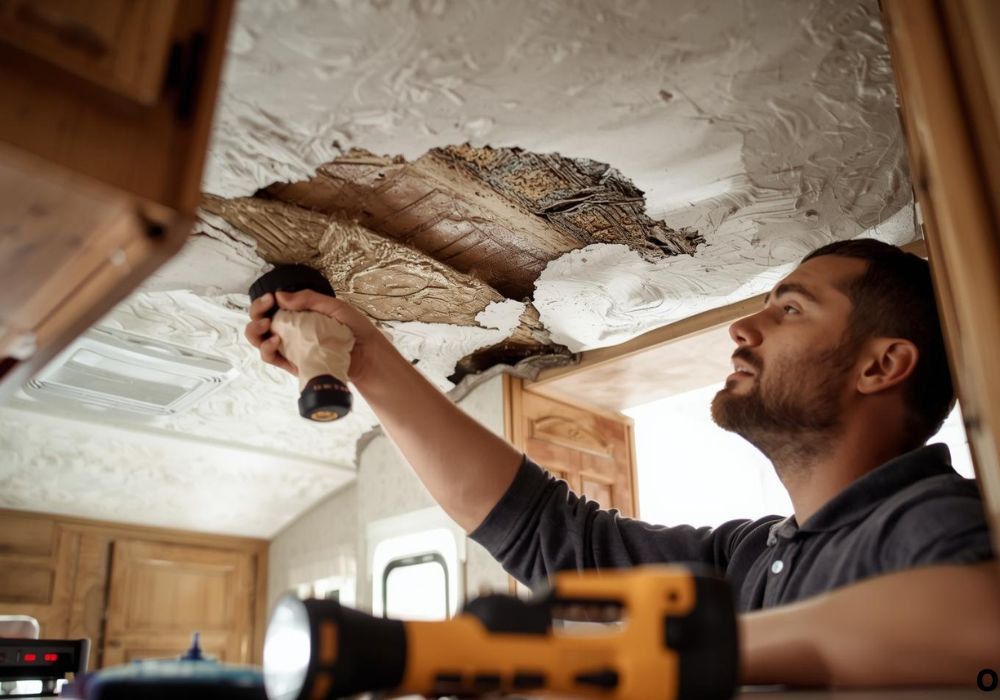
Regular roof and vent inspections are vital. Look for cracks, worn seals, or loose fasteners before they become major problems.
Manage interior humidity with vents, fans, or a small dehumidifier. This helps prevent condensation-related ceiling damage.
Apply RV roof sealants or coatings annually. A protective layer helps water bead and run off rather than seeping in.
Seasonal maintenance is crucial. Before winter or rainy seasons, clean gutters, check roof seams, and repair minor cracks.
Check around plumbing and air conditioning units for leaks. Fixing small drips immediately prevents bigger issues.
Keep a maintenance log with inspection dates, repairs, and observations. This helps identify recurring issues early.
Consider investing in roof protection accessories, like awnings or RV covers. They reduce water exposure during storage.
Educate all RV users on spotting early signs of damage. The sooner a problem is caught, the easier it is to repair.
Cost Considerations for RV Ceiling Water Damage Repair
DIY repairs save money but require time and effort. Material costs vary depending on ceiling type, insulation, and sealant.
Professional repairs are faster but more expensive. A full ceiling replacement may cost several hundred dollars or more.
Hidden costs include mold remediation, structural repair, and replacing multiple panels. High-quality materials can reduce long-term expenses.
Budgeting for preventive maintenance is cheaper than emergency repairs. Comparing DIY versus professional work helps make informed decisions.
Material choices also affect durability and cost. Water-resistant panels and sealants may cost more upfront but last longer.
Labor cost estimates vary: hourly rates or flat service fees can add up. Consider combining small repairs to reduce overall cost.
Insurance may cover damage in some cases. Check your policy to understand coverage for water damage repairs.
Planning ahead and knowing your budget prevents unexpected financial strain during repair.
Frequently Asked Questions (FAQ)
How long does it take to repair RV ceiling water damage?
Repairs may take a few hours for minor damage and up to several days for severe cases.
Can I fix water damage myself?
Yes, small leaks and minor panel damage can be repaired with proper tools and guidance.
Do I need special paint for RV ceilings?
Use water-resistant or RV-specific paint to ensure durability.
How do I prevent mold after repair?
Dry the area completely and apply mold inhibitors before sealing and painting.
What causes ceiling sagging?
Prolonged exposure to water weakens panels and underlying support structures.
Is professional repair always necessary?
Not always, but severe leaks, structural damage, or mold may require expert help.
Can leaks damage insulation?
Yes, wet insulation loses effectiveness and may harbor mold or mildew.
How often should I inspect my RV roof?
Ideally, inspect before and after each season, or after storms and long trips.
Are all RV ceilings the same material?
No, they vary: wood, fiberglass, or composite panels, each with different repair needs.
Can I prevent future leaks completely?
Regular maintenance reduces risk but cannot guarantee 100% prevention.
What tools are essential for DIY repair?
Utility knife, putty knife, sandpaper, caulk gun, screws, and safety gear.
How do I match new panels to the old ceiling?
Choose panels of the same material and paint color for a seamless finish.
Is insurance helpful for ceiling damage?
Some RV insurance policies cover water damage. Always review your plan.
What should I do if mold is severe?
Hire a professional for mold remediation to ensure safety and compliance.
Can seasonal changes worsen water damage?
Yes, temperature fluctuations and snow/rain can exacerbate leaks.
Conclusion
RV ceiling water damage can be alarming, but timely detection and proper repair make it manageable. Following a step-by-step process ensures a safe and long-lasting solution.
Using the right tools, materials, and preventive strategies reduces the likelihood of recurring leaks. Regular inspections and proper sealing are key to long-term results.
Whether you handle repairs yourself or hire professionals, addressing water damage early saves money and protects your RV’s structural integrity.
With these tips, your RV ceiling will stay strong, dry, and ready for countless adventures. Proactive maintenance and careful repair will extend the life of your RV and give you peace of mind on the road.
I’m David R. Coleman, the founder, lead writer, and lifelong tool enthusiast behind GarageToolPro.com. With years of experience in automotive repair, woodworking, and home DIY projects, I created this platform to share practical tips, detailed tool reviews, and step-by-step guides that help mechanics, hobbyists, and homeowners get the job done right the first time.

